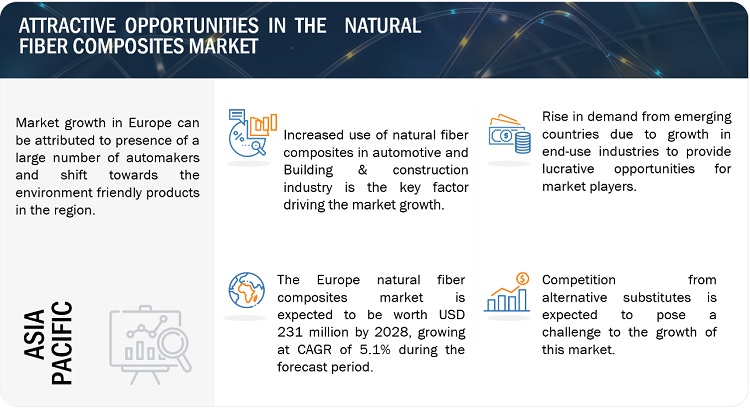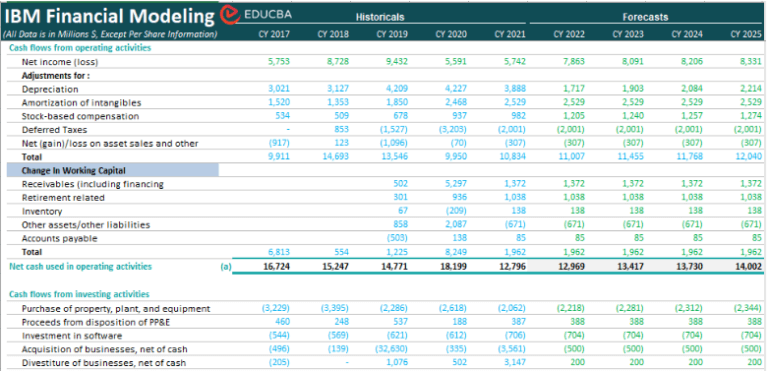Natural Fiber Composites Market: A Detailed Global Forecast To 2029

Table of Contents
Market Drivers and Growth Factors for Natural Fiber Composites
Several key factors are fueling the remarkable expansion of the natural fiber composites market.
Sustainability and Environmental Concerns
The growing global awareness of environmental issues is a major catalyst for the adoption of natural fiber composites. These materials offer a significantly more sustainable alternative to traditional composites, contributing to a reduced carbon footprint.
- Reduced reliance on petroleum-based materials: Natural fiber composites utilize renewable resources like flax, hemp, jute, sisal, and bamboo, reducing our dependence on finite fossil fuels.
- Biodegradability: Many natural fibers are biodegradable, minimizing environmental impact at the end of their lifecycle. This contrasts sharply with the persistent pollution associated with synthetic materials.
- Lower energy consumption in production: The manufacturing process for natural fiber composites generally requires less energy compared to their synthetic counterparts, further reducing their environmental impact.
Studies show that replacing traditional composites with natural fiber alternatives can lead to a reduction in carbon emissions by up to 70%, depending on the specific application and fiber type.
Cost-Effectiveness and Economic Advantages
Natural fiber composites offer considerable economic advantages, making them a compelling choice for various applications.
- Lower raw material costs: Natural fibers are generally cheaper than synthetic fibers, leading to lower overall production costs.
- Potential for local sourcing: Many natural fibers can be sourced locally, reducing transportation costs and supporting local economies.
- Reduced manufacturing costs in certain applications: Depending on the manufacturing process and application, natural fiber composites can offer significant cost savings compared to traditional composites.
For instance, the cost of flax fiber is considerably lower than that of carbon fiber, making flax-based composites a more economically viable option for certain applications in the automotive and construction industries.
Technological Advancements and Innovations
Continuous advancements in processing techniques and material science are further enhancing the performance and versatility of natural fiber composites.
- Improved fiber treatments: New treatments enhance the strength, durability, and water resistance of natural fibers, expanding their applicability.
- Advanced manufacturing processes: Innovations such as injection molding and pultrusion enable the efficient production of complex natural fiber composite components.
- Development of hybrid composites: Combining natural fibers with other materials, such as recycled plastics or bio-resins, creates hybrid composites with enhanced properties.
The development of innovative applications, such as using hemp fiber in automotive interiors and bamboo in construction materials, showcases the potential of these advanced composites.
Segmentation Analysis of the Natural Fiber Composites Market
The natural fiber composites market is segmented based on fiber type, application, and geography.
Fiber Type Segmentation
The market is dominated by a few key natural fibers, each with unique properties and applications.
- Flax: Known for its high strength-to-weight ratio, flax fiber finds applications in automotive components and construction materials.
- Hemp: Possessing excellent tensile strength and flexibility, hemp fiber is increasingly used in the automotive and packaging industries.
- Jute: A cost-effective fiber, jute is commonly used in packaging and geotextiles.
- Sisal: Known for its high durability, sisal finds applications in rope, mats, and composites for construction.
- Bamboo: Its fast growth rate and sustainability make bamboo a promising fiber for construction and various other applications.
The market share and growth projections for each fiber type vary based on factors like availability, cost, and performance characteristics.
Application-Based Segmentation
Natural fiber composites find diverse applications across multiple sectors:
- Automotive: Used in interior components, body panels, and structural parts to reduce weight and improve fuel efficiency.
- Construction: Employed in building materials like panels, insulation, and reinforcement structures for increased sustainability.
- Packaging: Utilized for creating lightweight and biodegradable packaging materials, reducing reliance on petroleum-based plastics.
- Wind energy: Used in blade components to reduce weight and improve performance.
Each application segment shows unique growth trajectories, influenced by specific industry trends and technological advancements.
Geographical Segmentation
The global market for natural fiber composites displays diverse regional growth patterns:
- North America: A significant market driven by the increasing demand for sustainable materials and government regulations.
- Europe: A mature market with established players and strong focus on sustainability initiatives.
- Asia-Pacific: A rapidly growing market fueled by increasing industrialization and cost-effective production of natural fibers.
Competitive Landscape and Key Players in the Natural Fiber Composites Market
The natural fiber composites market comprises several key players employing diverse competitive strategies.
Major Market Players
Numerous companies are actively involved in the production and supply of natural fiber composites and related products. Detailed profiles of major players, including their market share, product portfolios, and recent activities, are available in comprehensive market reports.
Competitive Strategies and Market Dynamics
Companies are employing various strategies to thrive in this competitive landscape:
- Pricing strategies: Companies are leveraging the cost-effectiveness of natural fibers to offer competitive pricing.
- Product differentiation: Emphasis is placed on developing innovative products with enhanced performance and sustainability features.
- Innovation: Significant investments are being made in research and development to improve processing techniques and develop new composite materials.
- Partnerships and collaborations: Strategic alliances are being formed to integrate natural fiber composites into existing supply chains.
The market dynamics are shaped by ongoing technological advancements, evolving consumer preferences, and government regulations promoting sustainable materials.
Conclusion: Investing in the Future of Sustainable Materials: The Natural Fiber Composites Market Outlook
The global natural fiber composites market is poised for significant growth through 2029, driven by the compelling combination of sustainability, cost-effectiveness, and technological advancements. The increasing global demand for eco-friendly materials, coupled with the economic benefits of these composites, presents lucrative opportunities for investors and businesses. The market's diverse applications and regional growth potential further enhance its attractiveness.
To learn more about the exciting prospects within the natural fiber composites market and explore potential investment opportunities, contact us or visit [link to relevant resource/report]. Embrace the future of sustainable materials; invest in natural fiber composites today.

Featured Posts
-
 Cuando Y Donde Ver El Partido Ac Milan Atalanta De La Serie A
May 13, 2025
Cuando Y Donde Ver El Partido Ac Milan Atalanta De La Serie A
May 13, 2025 -
 Ethan Slaters Role In Elsbeth Season 2 Episode 17 Explained
May 13, 2025
Ethan Slaters Role In Elsbeth Season 2 Episode 17 Explained
May 13, 2025 -
 Aws
May 13, 2025
Aws
May 13, 2025 -
 Rock Stock Earnings Preview Key Metrics And Financial Projections For Date
May 13, 2025
Rock Stock Earnings Preview Key Metrics And Financial Projections For Date
May 13, 2025 -
 Jessica Pegula Falls Short Against Sabalenka In Miami Open Final
May 13, 2025
Jessica Pegula Falls Short Against Sabalenka In Miami Open Final
May 13, 2025
